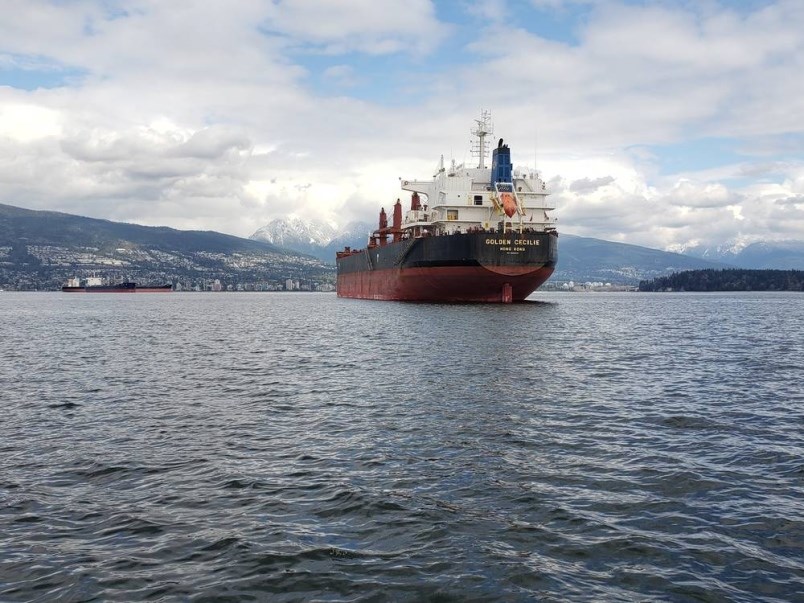An investigation into the collision of two freighters in Plumper Sound south of Vancouver last March identified gaps in one of the vessel’s protocols for adverse weather.
During strong winds on March 30, 2020, two vessels were stopped at anchorage points in Plumper Sound (near Saturna, Mayne and the Pender islands) about 1,280 metres apart.
Crews aboard the Golden Cecilie, a nearly 200-metre-long vessel, noticed the freighter was drifting and the anchor was dragging.
Unsuccessful attempts were made to drop a port anchor and stop the vessel from drifting toward another freighter.
Engineers started up the engine in an attempt to move away from the nearby Green K-Max 1, but the Golden Cecilie continued to drift and collided with the vessel twice, leaving a large hole in the Golden Cecilie. The anchor chains of both freighters became entangled, and they requested pilots and assist tugs to help untangle them and escort each vessel back to their anchorages.
The Transportation Safety Board found that despite having an approved safety management system, there were gaps in the Golden Cecilie’s preparedness for adverse weather.
“When vessels are at anchor, crews need to collect weather forecasts from all available sources in a timely manner; be aware of the risk factors that can lead to dragging anchor, in particular excessive freeboard and inadequate ballasting; and ensure that the main engines, anchors, and deck machinery are ready so that corrective action can be taken at the first sign of dragging anchor,” the report concluded.
The vessel’s operator, SeaTeam Management Pte Ltd., amended their protocols in response. At the time, the collision prompted calls for better management of anchorages to avoid collisions and the potential for an oil spill.
Nearby residents have also complained about noise and light pollution from the freighters.
The anchorages are used by freighters from around the world while they wait to receive their cargo at the Port of Vancouver and during inclement weather, and vessels are free to anchor temporarily wherever it’s safe, says Transport Canada. According to the agency, the average stay at anchorage points around the southern Gulf Islands is 8.6 days.
The freighters involved in March 30, 2020, collision had been at their respective anchorages since Feb. 24, 2020, and Feb. 28, 2020.



